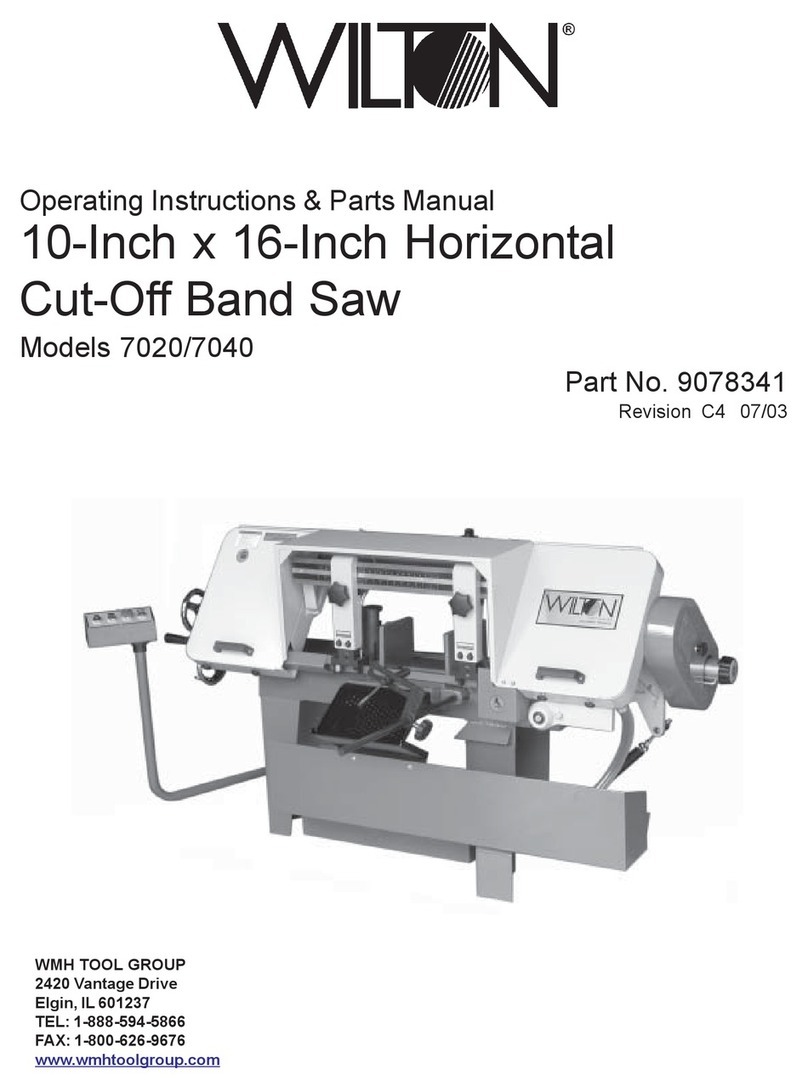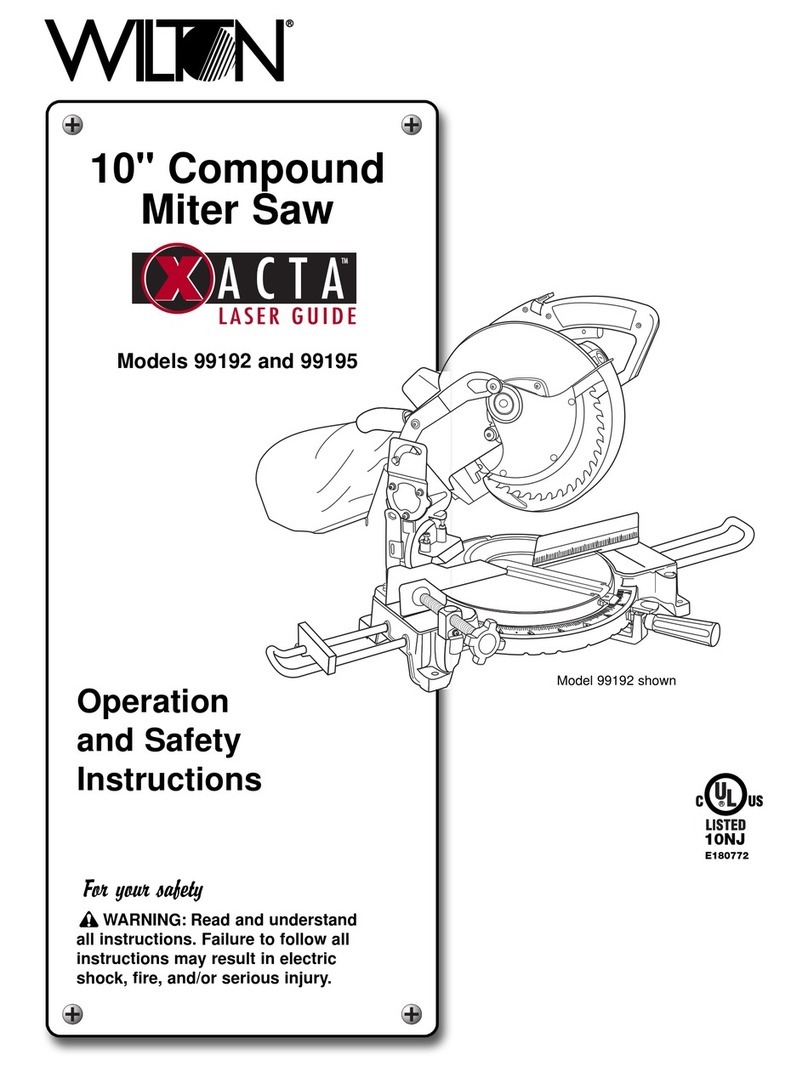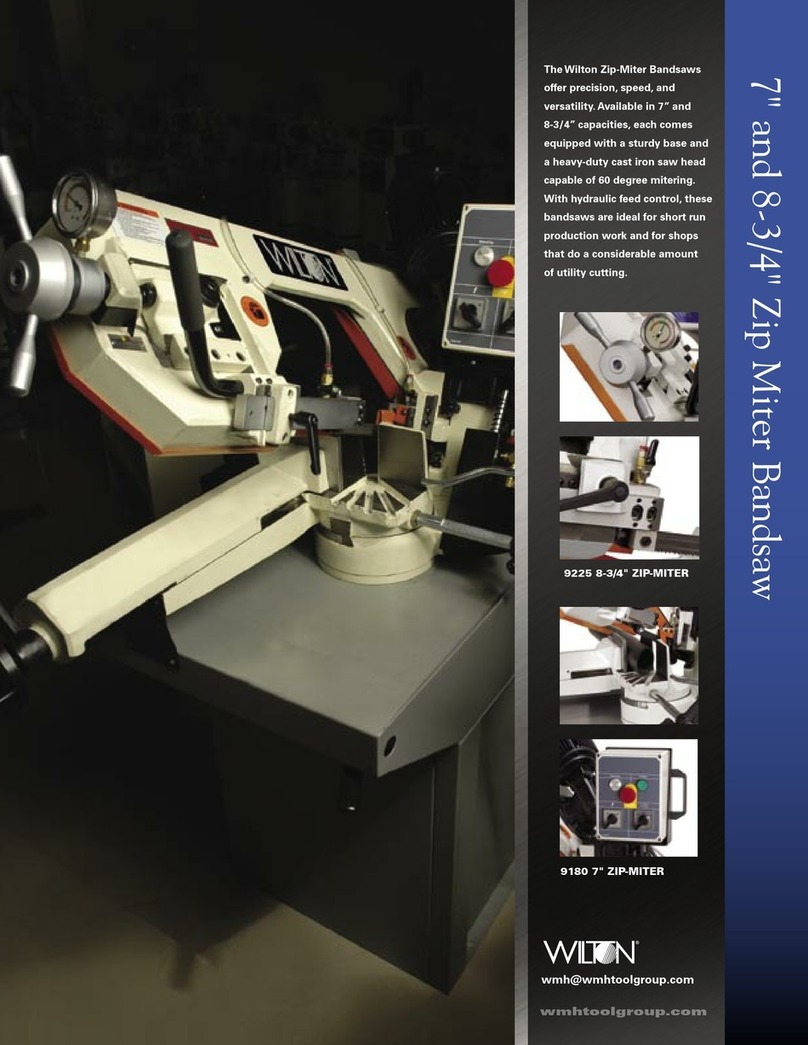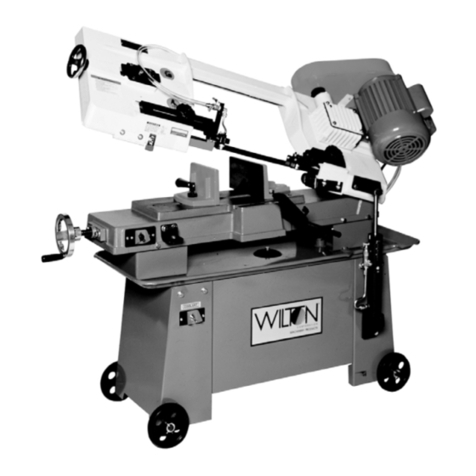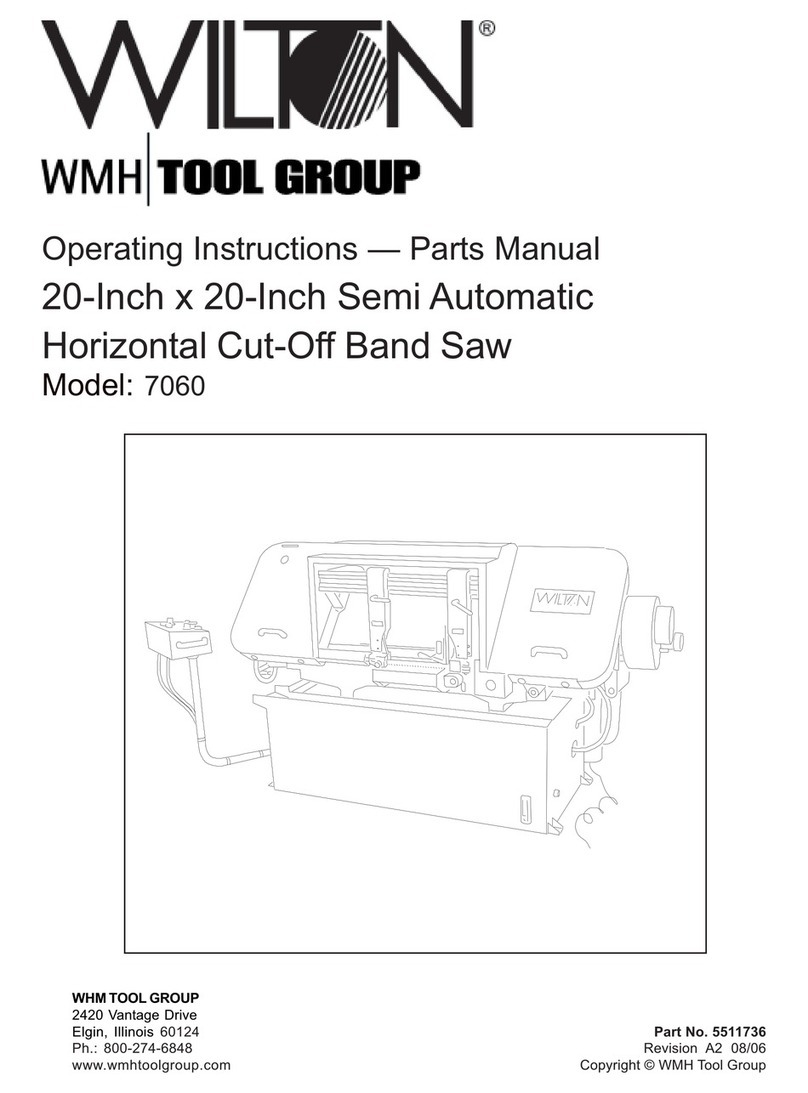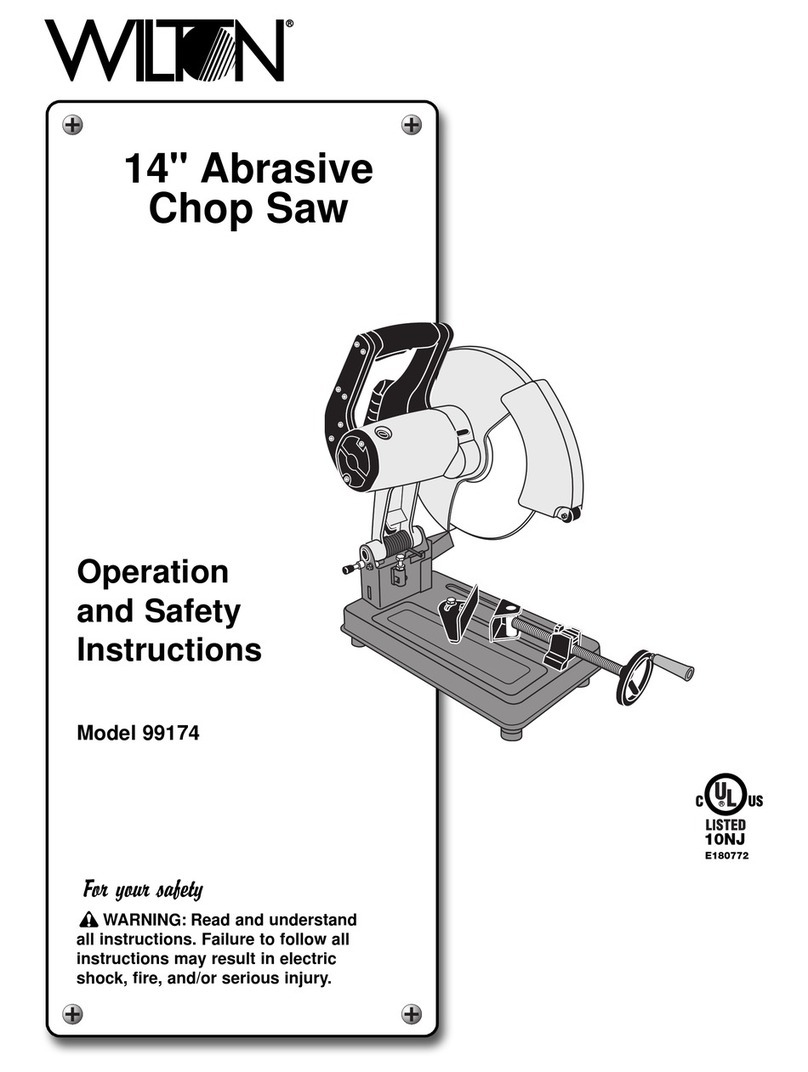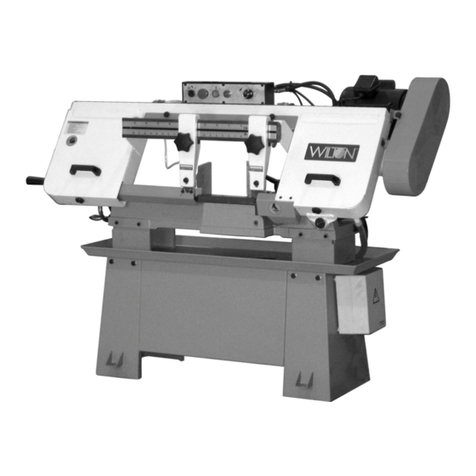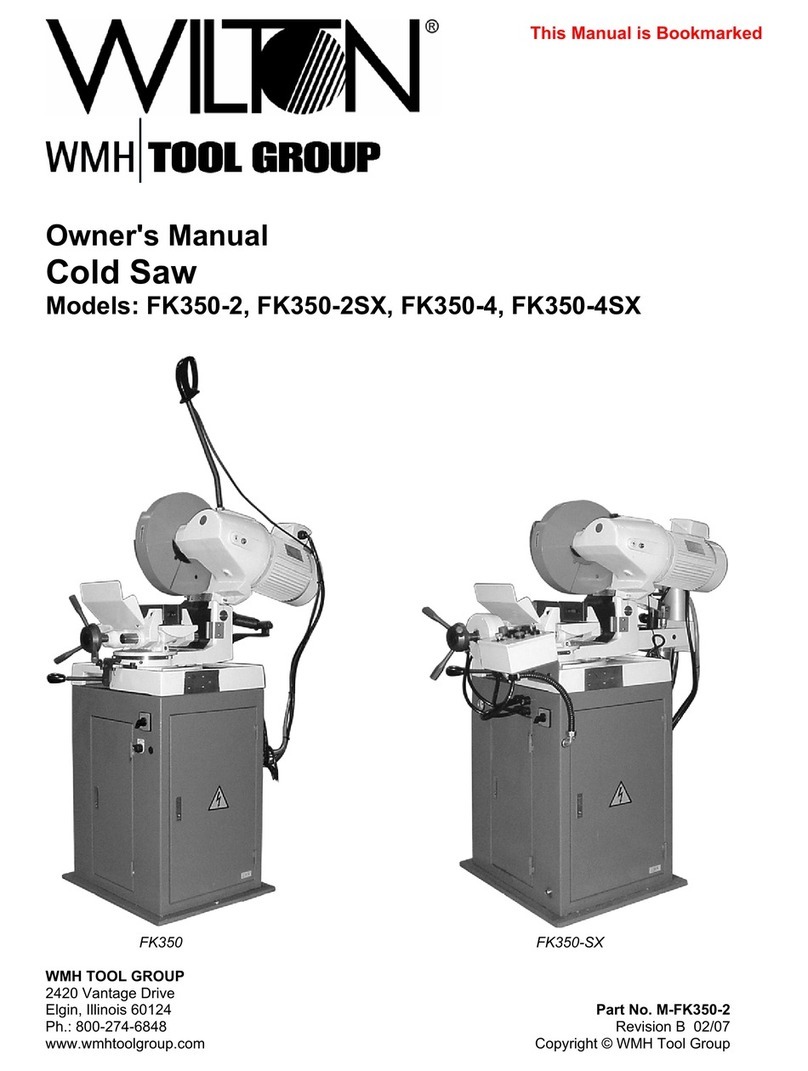- Misuse of this machine can cause serious injury.
- For safety, machine must be set up, used and
serviced properly.
- Read, understand and follow instructions in the
Operating Instructions and Parts Manual which was
shipped with your machine.
When Setting up Machine:
- Always avoid using machinein dampor poorly
lightedworkareas.
- Always be sure the machine support is securely
anchored to the floor or the work bench.
When Using Machine:
- Always wear safety glasses withside shields (See
ANSIZ87.1)
- Neverwear loose clothingorjewelry.
- Never overreach - you may slip and fall.
When Servicing Machine:
- Always disconnect the machine from its electrical
supply while servicing.
- Always follow instructions in Operating Instructions
and Parts Manual when changing accessory tools
or parts.
- Never modify the machine without consulting
Wilton Corporation.
You - the Stationary Power Tool User -
Hold the Key to Safety.
Read and follow these simple rules for best results
and full benefits from your machine. Used properly,
Wilton's machinery is among the best in design and
safety. However, any machine used improperly can
be rendered inefficient and unsafe. It is absolutely
mandatory that those who use our products be
properly trained in how to use them correctly. They
should read and understand the Operating Instructions
and Parts Manual as well as all labels affixed to the
machine. Failure in following all of these warnings
can cause serious injuries.
Machinery General Safety Warnings
1. Alwayswear protectiveeyewear when operating 8.
machinery. Eye wear shall be impact resistant,
protectivesafety glasseswith sideshieldswhich
comply with ANSI Z87.1 specifications. Useof
eye wear which does not comply with ANSIZ87.1
specifications could result in severe injuryfrom
breakage of eye protection.
2. Wear proper apparel. No loose clothingor
jewelry which can getcaught inmoving parts.
Rubbersoledfootwear isrecommendedfor
bestfooting.
3. Do notoverreach. Failureto maintain proper
working position can cause you to fall intothe
machineor cause your clothingto get caught
pullingyou intothe machine.
4. Keep guards in place and in properworking
order. Do notoperatethe machinewith
guardsremoved.
5. Avoid dangerousworkingenvironments. Donot
use stationary machinetools inwet or damp
locations. Keepwork areas clean andwell lit.
6. Avoid accidental starts by beingsurethe start
switch is OFF before plugging inthe machine.
7. Never leavethe machinerunningwhile unat-
tended. Machineshallbeshutoffwheneverit
is not in operation.
Disconnectelectricalpower beforeservicing.
Whenever changing accessoriesor general
maintenanceis done onthe machine, electrical
powertothe machinemustbedisconnected
beforework is done.
9. Maintainall machinetoolswithcare. Followall
maintenanceinstructionsfor lubricatingandthe
changingof accessories. No attemptshall be
madeto modify or have makeshiftrepairsdone to
the machine. This notonlyvoids the warranty but
also rendersthe machineunsafe.
10. Machinery mustbe anchoredto the floor.
11. Securework. Use clampsor a vise to hold work,
when practical. It is safer than using your hands
and itfrees both handsto operate the machine.
12. Neverbrush away chipswhile the machine is in
operation.
13. Keepwork area clean. Cluttered areas invite
accidents.
14. Removeadjustingkeysandwrenchesbefore
turning machineon.
15. Usethe righttool. Don't force a tool or attach-
mentto do a job itwas not designedfor.
16. Useonly recommendedaccessoriesand follow
manufacturersinstructionspertainingtothem.
17. Keep hands in sight and clear of all moving parts
5
